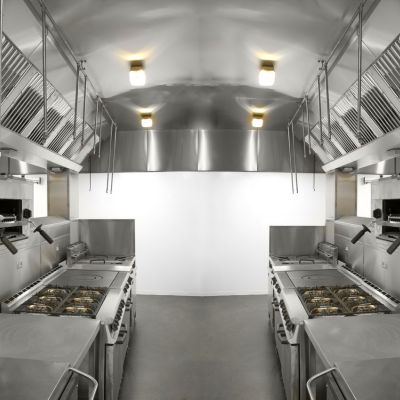One metric in the dynamic hospitality industry is a linchpin for evaluating efficiency and financial prowess – CPOR, or Cost per Occupied Room.
This metric encapsulates the heartbeat of hotel operations, serving as a crucial indicator of financial performance. CPOR is more than an acronym; it’s a strategic lens through which operational efficiency is measured, and hotel cost analysis takes center stage.
In this exploration, we uncover the significance of CPOR, unraveling the core aspects that contribute to a hotel’s financial success.
Deciphering CPOR: Unveiling Hotel Operational Costs

In hotel management, understanding financial metrics is paramount, and one such key indicator is CPOR Or Cost Per Occupied Room. Let’s delve into the essence of CPOR, a vital financial metric that unveils the average hotel cost for each occupied room.
Definition of CPOR
CPOR, or Cost per Occupied Room, is a critical financial metric in the hospitality industry. This metric is calculated by dividing the total operational expenses incurred by the hotel by the number of rooms occupied during a specific period.
CPOR provides a per-room cost analysis, offering valuable insights into a hotel’s operational efficiency and financial health.
Financial Metric Insights
As a financial metric, CPOR is a lens through which hotels can scrutinize their operational expenses. It goes beyond mere occupancy rates, offering a detailed understanding of the cost implications of each occupied room.
By dissecting expenses related to housekeeping, maintenance, utilities, and other operational facets, CPOR becomes a powerful tool for financial analysis.
Average Cost Assessment
CPOR allows hotel management to assess the average cost incurred for occupied rooms. This nuanced perspective aids in strategic decision-making, enabling hotels to identify areas where operational efficiencies can be enhanced and costs mitigated.
The average cost assessment provided by CPOR is invaluable for maintaining a delicate balance between service quality and financial sustainability.
Occupied Room Financial Insights:
In the dynamic landscape of the hospitality industry, insights into the financial aspects of occupied rooms are indispensable. CPOR sheds light on the direct costs associated with occupied rooms and contributes to the broader picture of a hotel’s profitability.
It serves as a compass for hoteliers navigating the complexities of financial management.
Hotel Expense Analysis:
CPOR integrates seamlessly into hotel expense analysis, offering a granular breakdown of costs related to hotel room occupancy.
This analysis extends to various operational facets, including staffing, maintenance, amenities, etc. This comprehensive approach makes CPOR a strategic ally for hoteliers aiming to optimize their financial performance.
Evaluating Hotel Profitability:
Ultimately, CPOR is pivotal in evaluating a hotel’s overall profitability. Aligning occupied rooms’ costs with revenue generation allows hotel management to make informed decisions to enhance operational efficiency and maximize financial returns.
Deconstructing CPOR: Unraveling the Building Blocks
To comprehend the intricacies of CPOR (Cost per Occupied Room), it’s imperative to dissect its components, each playing a crucial role in shaping the financial landscape of hotel operations.
Components of CPOR:
1. Labor Costs:

Labor constitutes a substantial portion of CPOR, encompassing salaries and wages of staff involved in various facets of room occupancy, from housekeeping to front desk services.
Analyzing labor costs provides insights into the human resource expenditure tied to maintaining occupied rooms.
2. Utilities:
Utilities, such as electricity, water, and heating, contribute significantly to CPOR. These essential services directly impact the habitability of rooms. Understanding utility costs allows hotels to manage energy efficiency and optimize consumption patterns.
3. Maintenance Expenses:
The upkeep of rooms, including repairs and renovations, forms a critical element of CPOR. Maintenance expenses cover planned and unforeseen costs to ensure that rooms meet quality standards. By scrutinizing these expenses, hotels can devise proactive maintenance strategies.
4. Overhead Expenses:
Overhead expenses encapsulate various indirect costs linked to room occupancy. This includes administrative costs, insurance, and other miscellaneous expenditures.
Delving into overhead expenses provides a comprehensive view of the broader financial implications of room utilization.
Operational Cost Breakdown
Breaking down operational costs within CPOR involves meticulously analyzing each component’s contribution.
Labor, utilities, maintenance, and overhead expenses are not isolated entities but interconnected elements that collectively define the financial landscape of room occupancy.
Hotel Expense Categories
CPOR’s components align with distinct hotel expense categories. Labor costs fall under human resources, utilities align with facilities management, and maintenance is integral to property management.
Recognizing these categories aids in strategic financial planning and resource allocation.
Occupancy-Related Overheads
Understanding CPOR extends to grasping the nuances of occupancy-related overheads. These overheads extend beyond direct room costs and encompass a spectrum of expenses essential to sustaining a conducive environment for guests.
CPOR Calculations: Navigating the Financial Landscape
Understanding CPOR (Cost per Occupied Room) involves unraveling the intricate formula and methodology that guide hotels through the financial terrain.
Let’s delve into the calculation methods, shedding light on how this metric offers a lens into the cost-effectiveness of hotel operations.
CPOR Calculation Formula
CPOR is derived by dividing the total costs of room occupancy by the number of rooms occupied during a specific period. The formula is expressed as:
CPOR= Total Costs ➗Number of OccupiedRooms
Methodology
1. Total Costs Analysis:
The first step involves aggregating all costs tied to room occupancy. This encompasses labor costs, utilities, maintenance expenses, and overheads. A meticulous examination of financial records ensures a comprehensive inclusion of all relevant expenditures.
2. Occupied Rooms Count:
Simultaneously, the number of rooms occupied within the defined timeframe is determined. This count is the denominator in the CPOR formula and is pivotal in assessing how efficiently the hotel utilizes its rooms.
3. Calculation:
Applying the CPOR formula, the total costs are divided by the number of occupied rooms. This yields a numerical value representing the cost incurred for each occupied room. The result provides a tangible metric for evaluating the financial efficiency of room utilization.
Financial Metrics in Hospitality:
CPOR sits within the domain of essential financial metrics in hospitality. It acts as a barometer, offering insights into the economic viability of room operations. Hoteliers use CPOR alongside other financial indicators to gauge overall financial health and identify areas for optimization.
Efficiency in Hotel Operations:
CPOR goes beyond mere numerical representation; it encapsulates the efficiency of hotel operations. A lower CPOR suggests cost-effective room utilization, while a higher CPOR prompts a closer examination of operational expenses and strategies for improvement.
CPOR Calculation Methods:
Various methods exist for calculating CPOR, each tailored to the specific nuances of hotel operations. These methods may include daily, monthly, or annual calculations based on the hotel’s preferences and reporting needs.
Unveiling the Crucial Role of CPOR in Hospitality Management
Understanding the importance of CPOR (Cost per Occupied Room) is akin to unlocking a strategic tool that plays a pivotal role in the landscape of hospitality management.
This section delves into the multifaceted significance of CPOR, shedding light on how it serves as a compass for hoteliers in budgeting, pricing strategies, and broader financial decision-making.
Significance of CPOR in Hospitality:
1. Strategic Budgeting:

CPOR serves as a linchpin in the budgeting process for hotels. By dissecting costs associated with room occupancy, hoteliers can strategically allocate resources, streamline expenditures, and ensure fiscal responsibility.
This aids in maintaining a balanced budget while optimizing operational efficiency.
2. Pricing Strategies Optimization:
Effective pricing strategies are fundamental to the success of any hotel. CPOR acts as a guiding metric, allowing hoteliers to set room rates that cover costs and contribute to profitability.
An intimate understanding of CPOR enables the establishment of competitive yet financially viable pricing structures.
3. Operational Decision Support:
In the dynamic domain of hospitality, informed decision-making is paramount. CPOR provides hoteliers with valuable insights into the financial health of room operations.
This, in turn, empowers them to make data-driven decisions, identify areas for cost reduction, and enhance overall operational efficiency.
Hotel Financial Planning:
CPOR seamlessly integrates into the broader spectrum of hotel financial planning. It serves as a hotel key performance indicator, offering a real-time assessment of how efficiently resources are utilized in room operations.
This, in turn, contributes to the development of robust financial strategies aligned with the overarching goals of the hotel.
Pricing Optimization Strategies:
A nuanced approach to pricing optimization involves a deep dive into CPOR. By understanding the intricate balance between costs and revenue, hotels can fine-tune their pricing strategies.
This not only ensures competitiveness in the market but also safeguards the financial sustainability of the hotel.
Enhancing Hotel Financial Decision-Making:
CPOR transcends numerical calculations; it becomes a cornerstone for astute financial decision-making.
Hoteliers armed with CPOR insights can confidently navigate the dynamic hospitality landscape, making decisions that positively impact both short-term profitability and long-term sustainability.
Factors Shaping CPOR: Navigating Influences
Exploring the dynamics of CPOR (Cost per Occupied Room) reveals a landscape influenced by several factors. In this section, we’ll delve into how seasonality, occupancy rates, and operational expenses contribute to the dynamic nature of this critical metric.
Understanding CPOR Dynamics:
1. Impact of Seasonality:
Seasonal trends significantly affect the hospitality industry. CPOR isn’t immune to these variations. Seasonal shifts can directly impact operational costs, influencing the overall CPOR. Adapting to these changes becomes crucial for maintaining financial stability.
2. Occupancy Rates and CPOR:
The occupancy rate, a pivotal indicator for hotels, directly shapes CPOR. Fluctuations in occupancy affect the resources allocated per room. Higher occupancy rates may distribute operational costs efficiently, lowering CPOR, while lower rates may amplify its impact.
3. Operational Expense Changes:
The dynamic nature of operational expenses adds complexity to CPOR. Shifts in labor costs, utility expenses, or unexpected operational changes can swiftly alter the CPOR landscape. Continuous monitoring and proactive adjustments are essential to navigate these fluctuations.
Adapting to Seasonal Changes:
Understanding the ebb and flow of seasonal demand is akin to a strategic dance with CPOR. Hoteliers must proactively adjust operational strategies based on anticipated shifts in demand.
This involves aligning staffing levels, adjusting inventory, and optimizing resources to balance costs and revenue.
Managing Operational Impact on CPOR
Operational agility is crucial in managing CPOR. Hotels need to cultivate an agile operational framework that can respond swiftly to changes in expenses.
Whether optimizing energy usage during peak periods or streamlining staff schedules during off-peak times, these operational adjustments directly influence CPOR outcomes.
Conclusion
In conclusion, CPOR emerges as a metric and a critical performance indicator in the hotel management domain. Its significance lies in its ability to provide a clear snapshot of operational efficiency, guiding strategic decisions for financial success.
As we wrap up our insights on CPOR, the key takeaway is the ongoing need for meticulous monitoring. CPOR isn’t a one-time analysis but a dynamic tool requiring continual observation for effective operational and financial strategies.
This metric, functioning as a performance indicator, paves the way for future trends in hotel metrics, emphasizing the importance of adaptability and strategic foresight in the ever-evolving landscape of hospitality management.








